A TRAVEL NEWS ARTICLE ABOUT EGYPT
AN INTRODUCTION
Over the past 18 months, Egypt has been interpreted as politically problematic by the international community; viewed, perhaps, as an edgy showpiece for journalism in the same way as Iraq or Afghanistan may be, though notably to a lesser extent. As a result of this media agenda, post-revolutionary Egypt has been suffering an enormous dip in tourism, and, as tour companies like Encounters Travel demonstrate, there’s no valid reason for this at all.

Pyramid and Sphinx
Egypt is undoubtedly one of the most fascinating locations on earth, boasting a rich history to rival every other civilisation on earth. Its lands have been defined by Bible stories and phenomenal innovation, the latter being easily demonstrated by the famous Giza Pyramids and Sphinx. Egypt today is a beguiling mix of the ancient and the modern, and touring the landscapes of this impressive nation is an experience like no other.

The River Nile winding its way through Cairo
Most of life in Egypt is still centred around the River Nile, with the rest of the country covered by a vast desert terrain whose only inhabitants are small nomadic communities. The legendary Nile runs northwards through ten African countries and is generally thought to be the longest river in the world.
Now is a great time to visit Egypt – support struggling tourism in the wake of the revolution. Things are cheaper, lots of offers available to encourage visits.
CAIRO
A bustling 20 million people inhabit Egypt’s capital, and the city has been at the heart of recent political conflicts within the country. For visitors, it may take a few hours to acclimatise to its chaotic atmosphere, but this lively metropolis is an important centre in the Middle East and a city quite unlike any other. There’s a lot to see in Cairo, and just taking a stroll down its streets at any hour of the day or night demonstrates the city’s offerings and diversity.

The 'ship of the desert' ready for you to ride when visiting the Pyramids
Undoubtedly Egypt’s most famous monument, the Giza Necropolis demonstrates the Ancient Egyptians’ importance as significant innovators beyond the technology of their time. Housing the famed Giza Pyramids and Giza Sphinx, it would be impossible to visit Cairo without straying away from the city centre to see these breath-taking monuments. These vast dwellings were a means of worship and honouring the dead according to Ancient Egyptian customs.
Back in Central Cairo, the city’s religious heritage is a mixing pot of Islamic and Christian sites. The sound of time passing rings throughout the whole city five times a day, with the loudest call to prayer coming from the Mohammed Ali Mosque, part of Cairo’s Citadel. The mosque is a beautiful example of Islamic Egypt, and a visit near prayer time will demonstrate that appreciation for this much-loved monument extends to the locals as well as to tourists.
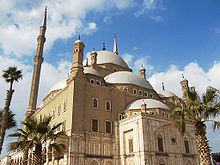
Mohammed Ali Mosque
(photo by wikipedia)
The most noteworthy Christian site in Cairo is the Church of el-Muallaqa (translated as The Hanging Church), dedicated to the Saint Virgin Mary and an example of a Coptic Church in Egypt. The church dates back to the 3rd century AD and was the first church in Egypt to be built in the architectural Basilican style.
Cairo’s Khan el-Khalili Bazaar is a maze of a market, located over a seemingly endless stream of streets in the city’s Islamic district. The scent of incense wafts through the whole market as men wander around releasing the smell from great big burners in their hands. The produce at Khan el-Khalili is colourful and exotic, and despite the busy atmosphere, vendors have the time to stop and haggle for as long as it takes.
Although Cairo’s best-known offerings are historical highlights such as the Giza Pyramids and Sphinx, as well as the impressive Egyptian Museum, a walk through the capital at night reveals the true spirit of this tantalising nation. The skyline at dusk combined with the picturesque moon can only be described as African, well-demonstrating Egypt’s place as a distinctively Middle Eastern nation with a delectable African flavour.
ASWAN
The modern Egyptian city of Aswan can be reached by sleeper train from Cairo or Luxor, taking between eight and nine hours each way. A night spent aboard one of these impressive trains is a surprisingly comfortable experience, and with the rails running parallel to the Nile in many places, it’s possible to capture a true taste of Egyptian life through the windows.
One of Aswan’s main sights is the High Dam, built over Lake Nasser following the Egyptian Revolution in 1952. The High Dam provided many new jobs for the local community when it was built, and it has continued to boost the city’s economy and culture into modern times. Under President Nasser in the 1950s and 1960s, the Soviets provided funding and machinery for development in Egypt, and the Lotus Flower monument close to the High Dam is a symbol of Soviet-Egyptian friendship in this vein.
As well as its development economically and culturally in recent history, Aswan has much to offer in traditional Egyptian terms. Its Sharia as-Souq, a market in typical Middle Eastern bazaar style, is an impressive stretch, with traders hard-selling in a standard Egyptian manner – “100% off”, “I don’t know what you’re looking for, but I have it”, and “a gift for the pretty lady?” are among the many sales pitches to be heard at Egyptian markets.
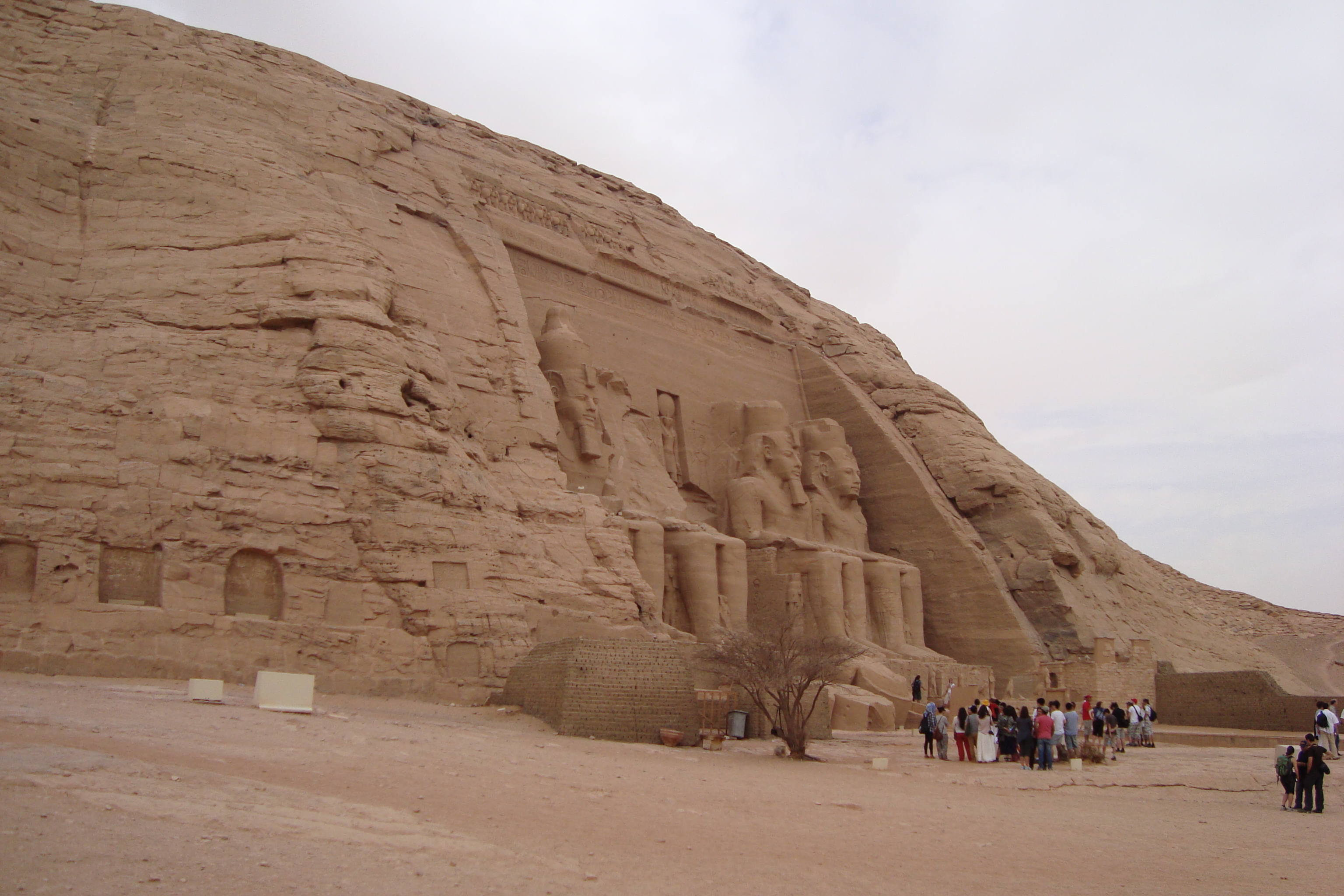
The Abu Simbel temples
A three-hour drive out into the desert will lead you to the Abu Simbel temples, one of Egypt’s top tourist attractions. Because of Abu Simbel’s location in the desert lands between Egypt and Sudan, the area can only be accessed alongside an armed convoy which leaves Aswan once daily at 4am. The two temples here were originally built into the face of a cliff by Pharaoh Ramesses II in the 13th century but were relocated just 65m upwards between 1964 and 1968 due to rising waters from Lake Nasser. These fantastically preserved monuments are well worth the 4am start.
LUXOR
Luxor is the modern site of the Ancient Egyptian city of Thebes, which was famous during ancient times and called the ‘capital of the known world’. Today, the city’s economy thrives on tourism with its sites regarded as some of Egypt’s best offerings.
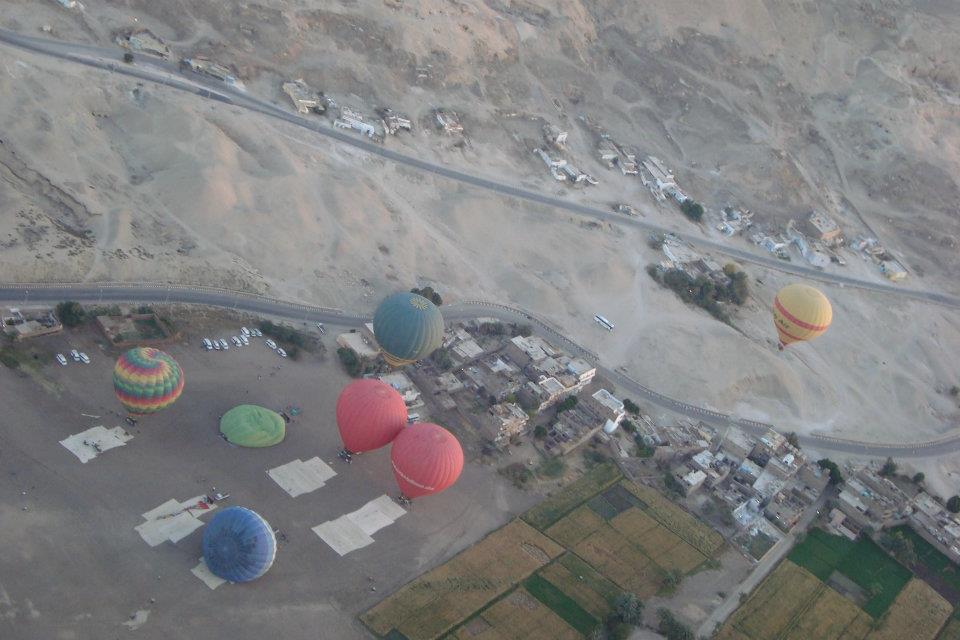
Balloons over Luxor
The city is often called “the world’s greatest open air museum”, and for this reason, one of the best ways to experience the stunning panoramic views of Luxor’s landscape is by hot air balloon. Rides depart early almost every morning, offering visitors the opportunity to see Luxor’s sites from above as they float upwards against the backdrop of an Egyptian sunrise.
Divided by the River Nile, Luxor’s attractions are located on both its East and West Banks, with some monuments spanning both, such as the Valley of the Kings, which has a valley on each bank. The Valley of the Kings has been a UNESCO World Heritage Site since 1979 and is made up of a series of tombs. Between the 16th and 11th centuries BC, every Egyptian pharaoh was buried here in an ornately decorated tomb. Famously, the mummy of Tutankhamen is still housed within the site.

A balloon's view of the Luxor countryside
Alongside the Valley, Luxor is also home to six great temples, most notably the Luxor Temple and the Karnack Temple. The Luxor Temple was used as base and fortress for the Roman government of the area during the era of Roman influence, leading to an interesting mix of Christian and Ancient Egyptian religions being showcased in the decoration and architecture here. The Karnack Temple is distinctive as almost every pharaoh is said to have developed or contributed something to the site, a tradition lasting over many dynasties.
RECOMMENDED
Encounters Travel offer good value, small group adventure tours to Egypt as well as some of the world’s most exciting destinations. Whether a solo traveller, a couple or with a group of friends, the guided tours offer a mix of action, trekking, safari, sightseeing, history, culture and fun in the sun!
Prices for the 14-day Nubians and Beaches tour starts from £595 per person to include transfers from/to Cairo airport, 13 nights varied accommodation in hotels, on board a sleeper train and on a felucca cruise boat with breakfasts and some meals, as well as a local tour leader and fully qualified Egyptologist throughout. The price does NOT include your flights. For the latest deals and discounts, check out the ‘special offers’ page on their website at
http://www.encounterstravel.com/egypt.htm
EgyptAir (www.egyptair.com) is Egypt’s national airline and has been a member of Star Alliance since 2008. They currently run eleven weekly flights from London Heathrow to Cairo, one to Luxor and three to Sharm El Sheikh.
For more information on visiting Egypt, please visit www.gotoegypt.org or www.egypt.travel.
You may also like to read
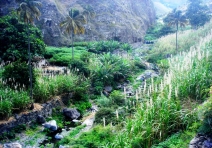
THE CAPE VERDE ISLANDS
Sue Dobson introduces Tour-smart readers to the 'tropical islands' off the west coast of Africa.

THE AZORES ARE 'AZORABLE'
Through the eyes and pen of Adam Hart, Tour-smart brings you the green velvet islands of the Azores. An emerald in the vast Atlantic Ocean.
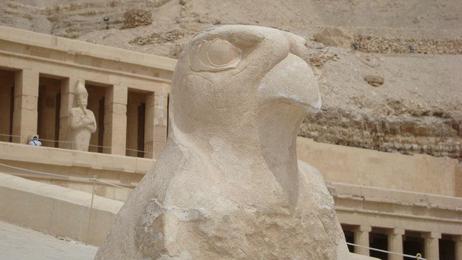
Comments